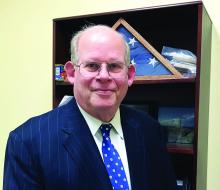Set Up Speed Bumps
Talk together about setting up some speed bumps to support their child’s safety. Find out if there are firearms in the home. Be crystal clear that they should be locked, preferably with ammunition, in a separate secure place. Their child should have no knowledge of how to access them, or they should be stored out of the home for the time being.
Parents should lock any medications that could be dangerous in overdose (including in homes if the adolescent will be visiting). Educate them about Tylenol and any prescription medications in their home that should be locked. This part of a conversation is always stressful. Acknowledge that, and remind everyone that, these are important strategies. It should be always be easier to ask their parent for help if they are feeling terrible than it is to access something dangerous.
Acknowledge the Strain
Finally, it is important to acknowledge how hard it is for your patient to bear these feelings, and that speaking up about them may feel like the last thing they want to do. Applaud them for their strength while reminding them that they need to share if they feel worse. Likewise, model for parents that feeling stressed and worried in this circumstance is normal. They should think about how to take good care of themselves. The same well-being strategies you reviewed for their child can work for them too! They may want to focus on sleep or exercise, enhance their nourishing social connections, protect time for beloved hobbies. Everyone should hear that they should never worry alone. If someone feels more worried, bring it to their parent, therapist, psychiatrist, spouse, or to you. They should trust their instincts if they think it is time to go to the emergency department. With supportive open communication, they will strengthen the protective connections which in turn will see the family through the course of the treatable illnesses that cause suicidal thoughts.
Lastly, this is difficult work for any physician. As psychiatrists, we worry about higher-risk teenagers when we decide that hospitalization carries a bigger risk than benefit. Pediatricians see many more teenagers with suicidal ideation and even though the statistical risk is very low, no one knows how to predict any individual teenager’s behavior. Therefore, pediatricians face the direct stress of the clinical work and the deeper stress of knowing there is always some uncertainty in medicine.
Dr. Swick is physician in chief at Ohana, Center for Child and Adolescent Behavioral Health, Community Hospital of the Monterey (Calif.) Peninsula. Dr. Jellinek is professor emeritus of psychiatry and pediatrics, Harvard Medical School, Boston. Email them at pdnews@mdedge.com.


